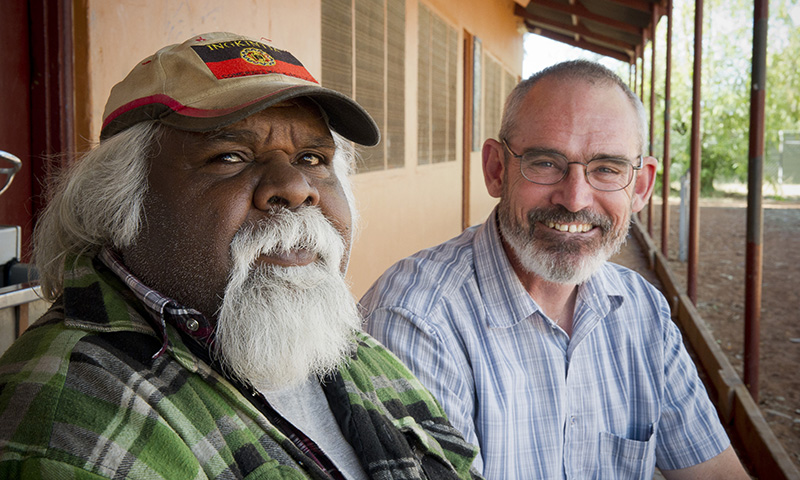Role of the Referendum Council
The Referendum Council was jointly appointed by the Prime Minister Malcolm Turnbull and Leader of the Opposition Bill Shorten on 7 December 2015.
Its job was to advise the Prime Minister and the Leader of the Opposition on progress and next steps towards a successful referendum to recognise Aboriginal and Torres Strait Islander peoples in the Constitution.
The council built upon the extensive work of the Expert Panel on Constitutional Recognition of Indigenous Australians and the Joint Select Committee on Constitutional Recognition of Aboriginal and Torres Strait Islander Peoples.
On 30 June 2017, the Council handed down its report to the Prime Minister and Leader of the Opposition.
- How did the Referendum council assess the different models for constitutional change?
The Referendum Council adopted the four principles previously used by the Expert Panel on Constitutional Recognition of Indigenous Australians. These principles guided the Council’s assessment of proposed models for constitutional recognition. Each proposal had to:
- Contribute to a more unified and reconciled nation;
- Be of benefit to and accord with the wishes of Aboriginal and Torres Strait Islander peoples;
- Be capable of being supported by an overwhelming majority of Australians from across the political and social spectrums; and
- Be technically and legally sound.
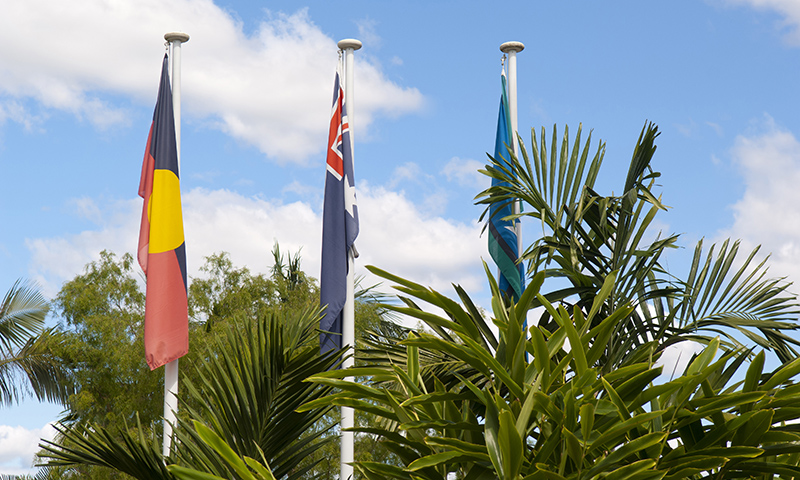
About constitutional recognition
Constitutional recognition is the move towards recognising Aboriginal and Torres Strait Islander peoples in Australia’s founding document, the Constitution. Many Australians have long advocated for changes to the Constitution and, since the work completed by the 2012 Expert Panel, various options for reform have been put forward.
The Referendum Council consulted on five options through a series of First Nations Regional Dialogues, and a national online consultation process.
- What changes could be made to the Constitution?
The Referendum Council has agreed on elements of potential referendum proposals that should form the basis of consultations:
- drafting a statement acknowledging Aboriginal and Torres Strait Islander peoples as the First Australians, and inserting it either in the Constitution or outside the Constitution, either as a preamble in a new head of power or in a statutory Declaration of Recognition
- amending or deleting the ‘race power’, section 51 (xxvi) and replacing it with a new head of power (which might contain a statement of acknowledgement as a preamble to that power) to enable the continuation of necessary laws with respect to Indigenous issues
- inserting a constitutional prohibition against racial discrimination into the Constitution
- providing for an Indigenous voice to be heard by Parliament, and the right to be consulted on legislation and policy that affect Aboriginal and Torres Strait Islander people
- deleting section 25, which contemplates the possibility of a State government excluding some Australians from voting in State elections on the basis of their race.
The Referendum Council has released a discussion paper about the possible options for changing the Constitution.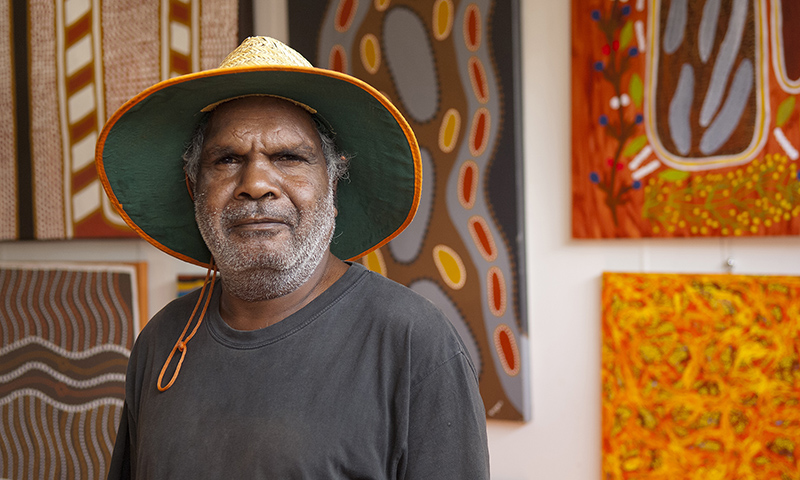
- What has happened so far?
Aboriginal and Torres Strait Islander peoples have been calling for changes to recognise their rights and interest as the First Peoples of Australia for many years. In 1967, the Constitution was amended to give the federal Parliament the power to make laws for Aboriginal and Torres Strait Islander peoples. This arose from a lengthy advocacy beginning in the early 1900s, with members of Parliament, Indigenous and non-Indigenous Australians uniting behind the change.
Referendum Council members have prepared a detailed timeline of Indigenous rights and advocacy:
A History of Aboriginal and Torres Strait Islander Rights and Advocacy
1869
Aboriginal Protection Act 1869 enforced segregation, concern about levels of killing, Acts designed to protect and control Indigenous lives.
1881
Yorta Yorta Petition for self-determination, allowing Indigenous people to speak language, manage lives and land.
1891
Constitutional Convention without any Aboriginal and Torres Strait Islander representation.
1925
Fred Maynard wrote a letter to the New South Wales Premier asking for equal citizenship rights and for the control of Indigenous affairs to be transferred to an Indigenous board so Aboriginal people could supervise their own affairs.
1926
David Unaipon called for the formation of a separate Aboriginal Territory, ‘Centralia’, to ensure increased Indigenous autonomy and representation.
1933
Joe Anderson, otherwise known as the great King Burraga, chief of the Thurawal tribe near Sydney, petitioned the Prime Minister for representation in federal Parliament.
1934
David Unaipon called on the Commonwealth to assume responsibility for Aboriginal affairs and for South Australia’s Chief Protector of Aborigines to be replaced by an independent body.
1937
William Cooper echoed the call for Indigenous representation in Parliament. He petitioned King George V.
1949
Sir Pastor Doug Nicholls wrote to then Prime Minister, Ben Chifley, arguing for Indigenous representation in federal Parliament.
1963
The Yirrkala bark petitions pleaded for the government to listen to Yolngu people before making decisions about their land and their lives.
1965
The ‘Freedom Rides’ called for an end to discrimination and for Aboriginal affairs to be run by Aboriginal people.
1967
On 27 May 1967, Australians voted ‘Yes’ to give the Australian Parliament the power to make laws for Aboriginal people and to include Aboriginal people in the Census. The referendum was supported by 90.77% of voters.
Gurindji Petition for self-determination.
1968
Hearings commence between Yolgnu and Nabalco (pre-cursor to Mabo)
1972
The Larrakia Petition sought establishment of a Treaty Commission to negotiate with language groups on land rights and political representation.
The Aboriginal Tent Embassy was established and put forward a substantive plan for land rights and sovereignty (NT an Aboriginal State, NT Parliament predominantly Aboriginal, compensation for land, protection of sacred sites).
Beginning of self-determination era with the Whitlam Government’s legislation and creation of legal and health services.
1975
National Treaty Committee established.
1979
The National Aboriginal Conference called for Makarrata, changing the language from treaty. Makarrata is a coming together after a struggle; the Makarrata seeks the happiness, the unity and the wellbeing of all Australian people. A detailed road map was presented for settlement in Australia and teaching Aboriginal and Torres Strait Islander culture in schools. Work halted after a change in government.
1983
The Senate Standing Committee on Constitutional and Legal Affairs recommended that the Constitution be amended to facilitate agreement making between Indigenous peoples and the Australian state.
1988
The Constitutional Commission released its final review of the Australian Constitution, which recommended removing sections 25 and 51(xxvi) as they allow for discrimination based on race.
Galarrwuy Yunupingu presented the Barunga Statement to Prime Minister Hawke calling for a treaty to recognise Indigenous rights to self-determination and self-management. The Barunga Statement called for Aboriginal control, freedom and respect, and for a national elected Aboriginal and Islander organisation to oversee Aboriginal and Islander affairs.
The Individual and Democratic Rights Advisory Committee in the Constitution Commission’s Report advised that ‘the Preamble should acknowledge the historical truth of the settlement of Australia by Europeans in 1788. It is appropriate to recognise in the Preamble that prior to the arrival of European settlers Australia was owned by the Aboriginal people. Such recognition in the Constitution would be an act of good faith and symbolic importance in furthering reconciliation between Aboriginal and non- Aboriginal Australians’.
1992-1995
The response to Mabo was fashioned by the Keating Government. Amongst other things, a ‘Social Justice Package’ was devised. Indigenous groups and organisations proposed the package should include a range of constitutional reforms. The Keating government lost office before the package could be implemented.
1998
The High Court delivers its decision in Kartinyeri v Commonwealth (the Hindmarsh Island Bridge Case), holding, in a split decision, that section 51(xxvi) of the Constitution can be used to discriminate adversely against Indigenous people.
1999
A referendum was held proposing to make Australia a republic and to insert a preamble recognising Indigenous people. Both referendum questions were defeated.
2000
The Council for Aboriginal Reconciliation delivered its final report to the Australian Parliament. It recommended recognising Indigenous Australians in a new preamble to the Constitution, removing section 25 and introducing a new section making it unlawful to adversely discriminate based on race.
2003
The Senate Legal and Constitutional Affairs Committee recommended the insertion of a preamble recognising Indigenous peoples, the deletion of section 25, and the amendment of section 51(xxvi) so that it only permits race-based laws for the benefit of any particular race.
2007
Former Prime Minister Howard announced that his Government was committed to holding a referendum on constitutional recognition, which was also supported by the Opposition. Constitutional recognition continues to enjoy bipartisan support from the Government and the Opposition. Noel Pearson wrote a letter to John Howard about how to do business in Indigenous Affairs in the next Parliament including constitutional reform – Indigenous Advisory Body. John Howard just picks up on the recognition aspect.
2008
Former Prime Minister Kevin Rudd pledged his support for recognition after receiving a communique on behalf of the Yolngu and Bininj clans in Arnhem calling for the Government to ‘work towards constitutional recognition of our prior ownership and rights’.
The 2020 Summit recommended constitutional reform concerning Indigenous peoples, elements of which were endorsed by the Labor Government
2011
The Expert Panel on Constitutional Recognition of Aboriginal and Torres Strait Islander Peoples held public consultations on the model for recognition. It delivered its report in January 2012.
2012
The ‘Recognise’ campaign, led by Reconciliation Australia, to recognise Aboriginal and Torres Strait Islanders peoples in the Constitution was established.
2013
The Australian Parliament passed the Aboriginal and Torres Strait Islander Peoples Recognition Act 2013 to affirm its support for constitutional recognition.
On 28 November 2013, the Australian Parliament established the Joint Select Committee on Constitutional Recognition of Aboriginal and Torres Strait Islander Peoples to enquire about steps towards a successful referendum.
2014
The Act of Recognition Review Panel was appointed. It delivered its report in September 2014.
2015
On 25 June 2015, the Joint Select Committee on Constitutional Recognition of Aboriginal and Torres Strait Islander Peoples tabled its Final Report.
On 7 December 2015, the Prime Minister and Leader of the Opposition appointed the Referendum Council on constitutional recognition to conduct a national consultation process on how Australians think Aboriginal and Torres Strait Islander peoples should be recognised in the Constitution.
2016
The Referendum Council began its consultation process.
- What is Recognise?
Many people confuse the Referendum Council with Recognise. The Referendum Council is not the same entity as Recognise. Recognise is Reconciliation Australia’s campaign to raise awareness and understanding of constitutional recognition.
- Where can I find out more?
The council’s discussion paper sets out the different options for constitutional change on which the council is consulting, and outlines some of the issues to be taken into account.
The News and Resources page contains a list of reports explaining some of the major debates about constitutional recognition.
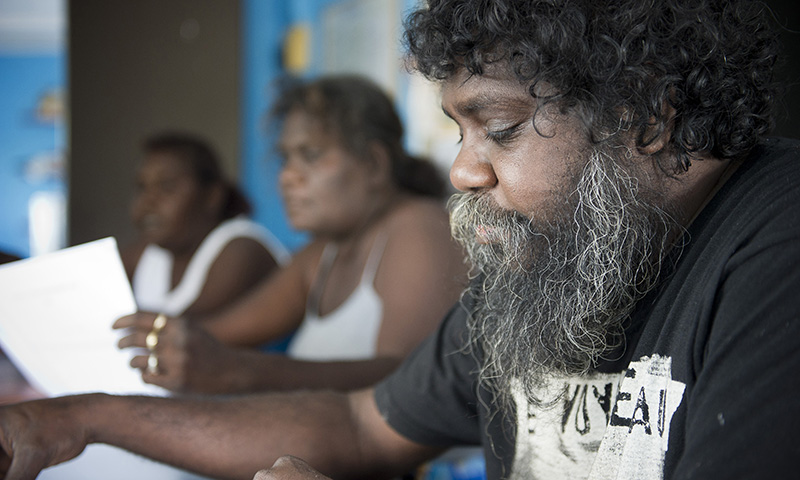
Referendums
A referendum is a vote to change the Australian Constitution, and the only way to change it. In a referendum, all enrolled voters get to have their say by voting on the proposed change.
Changes to the Constitution will only be made if a majority of Australians vote ‘yes’ in a majority of (at least 4 out of the 6) States. This is known as a ‘double majority’. Votes from the Australian Capital Territory and Northern Territory only count towards the national majority.
- What is the difference between a referendum and a plebiscite?
A referendum is a vote to change the Constitution.
A plebiscite is a vote that is not intended to and cannot change the Constitution. A plebiscite may be held to test whether people support or oppose a proposed action on any issue. Voting may or may not be compulsory, and the result isn’t constitutionally binding. Few plebiscites have been held at the Commonwealth level; they are more commonly held by state governments. An example of a Commonwealth plebiscite is the 1977 national song poll.
- Who can vote in a referendum?
Everyone who is enrolled to vote must have their say in a referendum. You must be enrolled to vote if you are an Australian Citizen aged 18 years and over.
- How do I enrol to vote in a referendum?
You must be on the electoral roll to vote in a referendum. You can visit the Australian Electoral Commission’s website for further information.
- Who will decide on what changes should be made?
First, the parliament will pass a bill setting out the proposed changes to put to a referendum following any consultation process that has been established. The Australian public then votes at a referendum on whether the proposed change should be made.
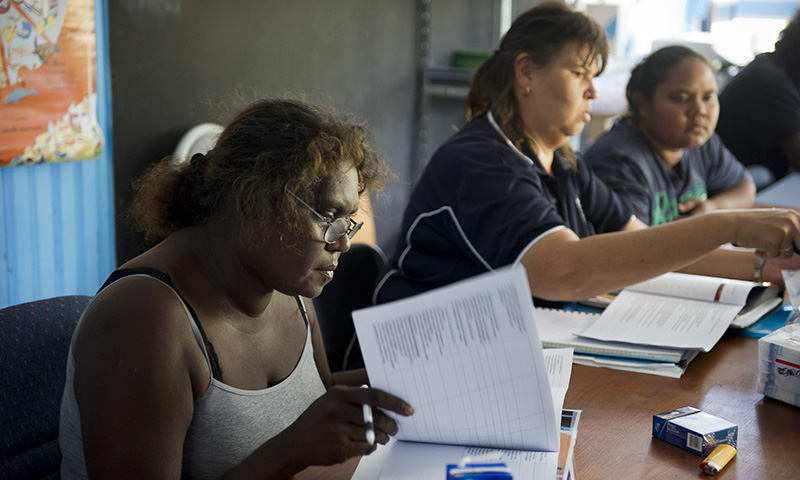
- What will the ballot paper say?
The ballot paper will state the title of the proposed law as passed by the Australian Parliament. For example, there was a referendum in 1999 on including a preamble (or set of introductory words) in the Constitution. The ballot paper stated: ‘A PROPOSED LAW: To alter the Constitution to insert a preamble’.
- What is the process to get to a referendum?
There are five main steps to get to a referendum:
Step 1 – A bill is passed by parliament
A bill setting out the proposed changes to the Constitution is considered by both the house of representatives and the Senate. Usually, both houses must pass the bill – either in its original form or with agreed amendments.
Step 2 – Case committees are formed
Next, ‘yes’ and ‘no’ case committees are formed by the MPs and senators who voted for or against the bill. If no one has voted against the proposal, a ‘no’ committee may not be formed.
Step 3 – A writ is issued
The governor-general issues a formal written order, known as a ‘writ’, which legally allows the referendum to happen.
Step 4 – Information is provided to voters
The ‘case’ committees are each required to prepare cases for voting 'yes' and 'no', which are provided to the Australian Electoral Commission (AEC). The AEC will post a pamphlet to all voters, including:
- a statement setting out the proposed changes to the Constitution; and
- cases prepared by the ‘yes’ and ‘no’ committees setting out arguments for and against the changes.
Step 5 – Australians vote
Voting in a referendum is similar to voting in the federal election. The referendum will take place on a Saturday and you will need to visit your nearest polling station if you are enrolled to vote. The main difference compared to the federal election when voting is that you must vote ‘yes’ or ‘no’ to the question on the ballot paper.
- How long does this process take?
Step Activity Timing 1 The public debates the proposed change. Until a model for change is identified by the public. 2 A bill to amend the Constitution is introduced into parliament and then debated. Timing determined by the government 3 Referendum bill passed by parliament. Must be passed between two and six months before the referendum. 4 Yes and no committees formed. After the bill is passed by parliament. 5 'Yes' and 'no' cases prepared for the Australian Electoral Commission. Submitted within four weeks of passage of Referendum bill. 6 Writs issued. Between 58 and 33 days before polling day. 7 Electoral roll closes. Closes at 8pm, seven days after the issue of the writ. 8 Information provided to voters. No later than 14 days before the referendum. 9 Referendum. Timing determined by the government - Why is it so hard to change the Constitution?
The drafters of the Constitution wanted to make sure it could only be changed with the clear and widespread agreement of the Australian people, who voted it into being.
- How many referendums have been held?
Since Federation, 44 proposed changes have been put to the Australian people through nineteen separate polls. Only eight of these proposed changes have been passed. The Australian Electoral Commission hold all the information aboutAustralia’s referendums and their results.
- Who runs a referendum?
Referendums are run by the Australian Electoral Commission. Further information can be found on the Australian Electoral Commission website.
